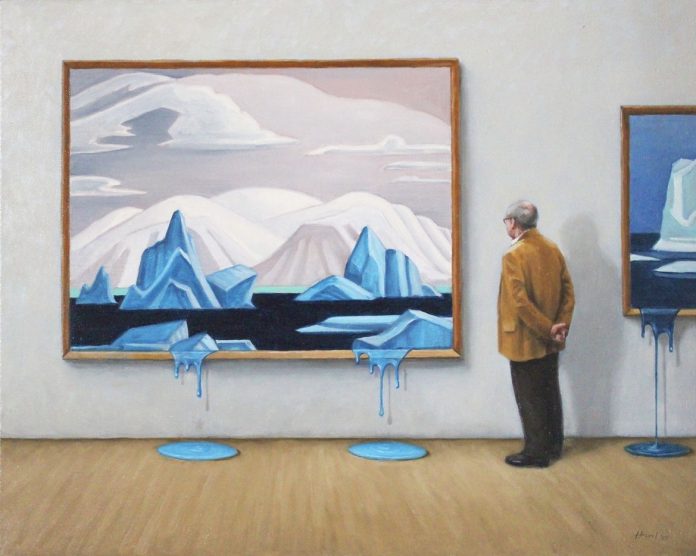Painting is the expression of ideas, emotions, and certain aesthetics in a two-dimensional visual form, according to Britannica.
Toni Hamel, a 62-year-old Italian-born painter, began her artistic journey at a fine arts school in Italy.
After initially moving to Canada and residing in Alberta, Hamel briefly returned to Italy before settling in Scarborough and later Oshawa. Despite her fine arts background, she pursued a computer graphics program at Sheridan College due to limited job prospects in her field.
Hamel’s career then spanned 15 years in digital media, after which she revisited her passion for drawing and painting.
According to Britannica, a lot of artists use their art to address societal issues, a path Hamel also follows. “As an artist I think it is my duty to reflect on what surrounds me, so if there are social injustices or environmental concerns, anything that provokes an idea in my head that’s what I will do,” she says.
Her artwork, such as the piece titled ‘Drought’, often mirrors contemporary societal issues, depicting a woman watering a cloud on dry flat land. “Whatever contribution I place on an image doesn’t mean the viewer has to have the same inference,” Hamel says.
Hamel takes great pride in her work’s ability to inspire curiosity and stimulate discussion. She advocates for art’s role in fostering dialogue. “Art must bear witness in the sense that if you are a member of the current society you have to reflect the context in which you live,” she says.
Beyond her artistic viewpoint, Hamel confronts personal challenges, notably her bipolar disorder, a mood disorder identified by The National Institutes of Mental Health . She credits her psychological well-being to her engagement in the art world. “If I didn’t work in this field I don’t know if I would be well psychologically,” she says.
Like many, Hamel uses her art as an outlet based on her moods rather than to hold it all in. She finds that this field of work has allowed her to be the best that she can be.
From her beginnings as an aspiring artist in Italy to a reinvigorated artist in Oshawa 15 years later, Hamel has defined success on her own terms.
BetterUp, an online professional coaching platform, defines success simply as achieving a goal, but for Hamel, it’s about passion. “Success for some people is money, for people like me it’s just being able to do what I love to do, period,” she said.
Hamel now lives in Kingston where she continues to work on new projects for a gallery in San Fransisco, U.S called CK Contemporary.
She encourages aspiring artists to persevere, highlighting the role of social media in promoting independent art. She believes that artists don’t necessarily require a gallery to earn a living and can succeed independently with dedication.
Hamel acknowledges Sean McQuay, a fine arts professor at Durham College, as a valuable mentor.
“Sean is doing a good job with the students there, so listen to what he says he has experience in the field and just go for it,” she says, while also cautioning that success may not be immediate. “It’s a long and hard years road but eventually if you keep it up you can be successful. Whatever success means to you.”
She also sees value in painting as a hobby, encouraging young artists to continue, even if not professionally. “It’s a good hobby to have,” she says.




